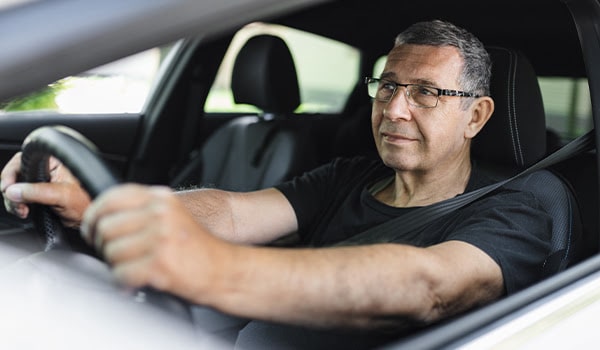

Driving is a skill that recruits many basic abilities such as vision, reactions and coordination. The road can also be a stressful environment where multiple information streams need to be processed. This requires a high level of concentration. Therefore, anyone who suffered a stroke or traumatic brain injury may struggle when trying to get behind the wheel again.
However, having a brain injury might not be the end of driving forever. There are strategies and assessment to see if you are ready to get behind the wheel. So, are you ready to drive after a stroke?

It is important to note that you may not just start driving again even if you had a mild brain injury. Driving regulators insist on a minimum period of one month after the incident before being cleared by a medical professional.
Time is just one aspect that needs to be considered. It’s also about checking your cognitive and physical abilities to control a vehicle in a fast-paced environment.
Your physician can give you clearance after assessing some vital skills that’s required when driving. These tests usually include:
- Vision tests to check perception and visual acuity.
- Memory tests to gauge how well you handle directions using a compass.
- Trail marking tests to gauge visual-motor tracking and visual scanning abilities.
Your physician will then decide if you are able to sit behind the wheel or if you will need to stay on the passenger seat a while longer.

As with all rehab markers, it takes a variety of exercises to get the brain used to driving again. This applies to both physical and cognitive functions. This may include:
- Improving your ability to remember directions and markers. You can do this by playing basic memory games to promote brain neuroplasticity and its repair processes. By doing flashcards with road signs and local landmarks, it will help the brain recognise points as you drive and slowly log common routes on which you may travel regularly.
- Practising foot exercises is also highly recommended. Performing basic heel and toe lifts helps simulate using pedals to accelerate and decelerate. This will train the brain to recognize the signals needed to control the gas and brake pedals, as well as strengthen the control over your feet.
- Additionally, hand-eye coordination can be improved by holding a circular object and simulating the hand movements on a steering wheel.
Overall, no one should restart driving after a stroke or traumatic brain injury without clearance from their physician. As you significantly recover and get clearance, you may even be able to adapt your vehicle to overcome any lingering disabilities. It’s these skills that will help you regain your licence and enjoy the open road once again.
Give Feedback
Let us know if you found this useful and what topics you would like to see in the future so that we can provide more relevant content for you.
References:
1. Flint Rehab. (2020)
2. Stroke Association. (2022)
3. Stroke Foundation. (2022)
Website: Moleac.com
Contact: [email protected]
This document does not constitute the practice of medical consultation nor medical advice. Always seek the advice of your treating physician and/or specialist.
All Rights Reserved by Moleac Pte Ltd, Helios #09-08, 11 Biopolis Way, Singapore 138667





